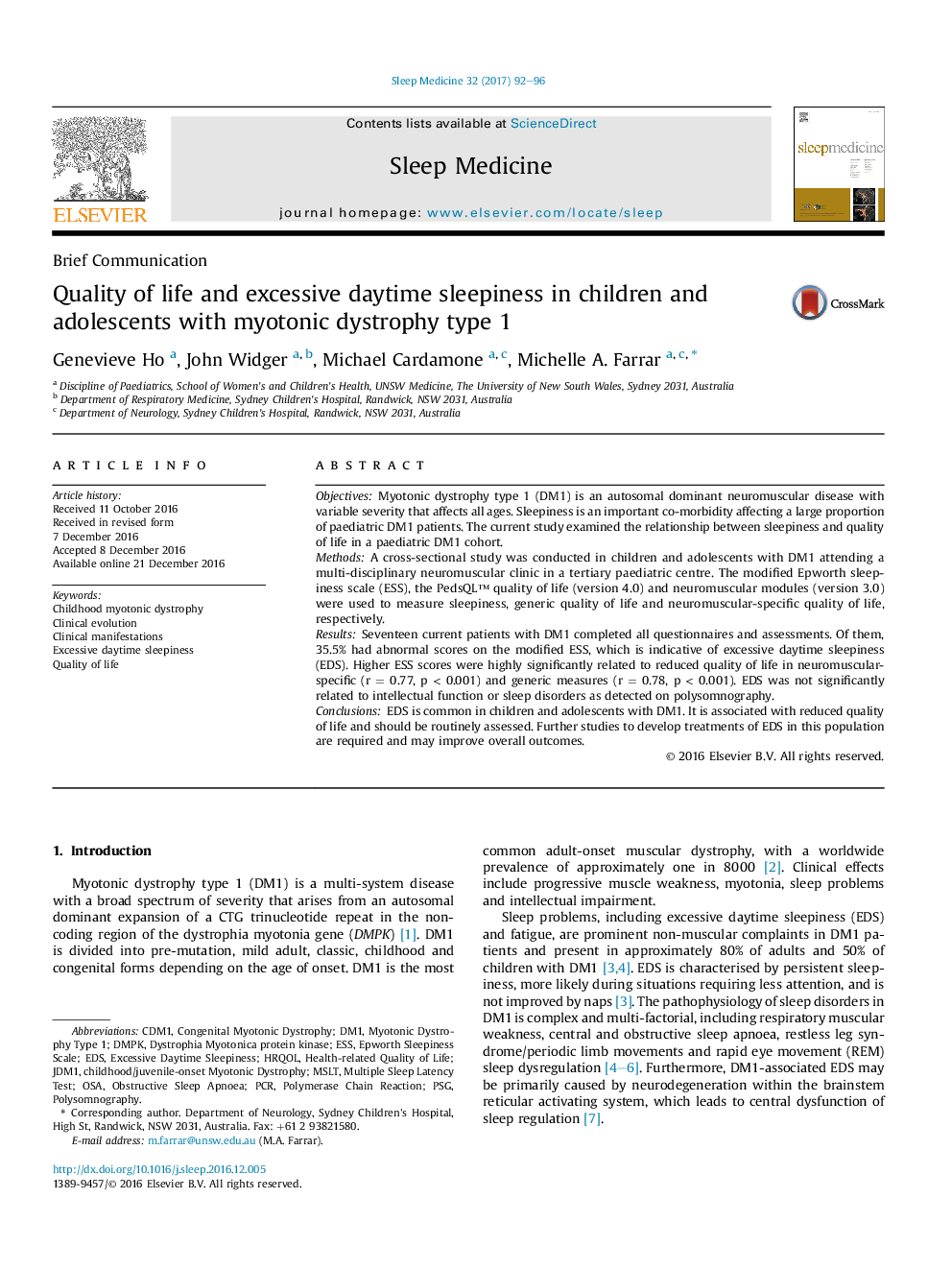| Article ID | Journal | Published Year | Pages | File Type |
|---|---|---|---|---|
| 5643656 | Sleep Medicine | 2017 | 5 Pages |
â¢Quality of life is reduced in children and adolescents with DM1.â¢EDS was significantly related to the quality of life in these patients.â¢Treatment of EDS may significantly augment the quality of life in children and adolescents with DM1.
ObjectivesMyotonic dystrophy type 1 (DM1) is an autosomal dominant neuromuscular disease with variable severity that affects all ages. Sleepiness is an important co-morbidity affecting a large proportion of paediatric DM1 patients. The current study examined the relationship between sleepiness and quality of life in a paediatric DM1 cohort.MethodsA cross-sectional study was conducted in children and adolescents with DM1 attending a multi-disciplinary neuromuscular clinic in a tertiary paediatric centre. The modified Epworth sleepiness scale (ESS), the PedsQL⢠quality of life (version 4.0) and neuromuscular modules (version 3.0) were used to measure sleepiness, generic quality of life and neuromuscular-specific quality of life, respectively.ResultsSeventeen current patients with DM1 completed all questionnaires and assessments. Of them, 35.5% had abnormal scores on the modified ESS, which is indicative of excessive daytime sleepiness (EDS). Higher ESS scores were highly significantly related to reduced quality of life in neuromuscular-specific (r = 0.77, p < 0.001) and generic measures (r = 0.78, p < 0.001). EDS was not significantly related to intellectual function or sleep disorders as detected on polysomnography.ConclusionsEDS is common in children and adolescents with DM1. It is associated with reduced quality of life and should be routinely assessed. Further studies to develop treatments of EDS in this population are required and may improve overall outcomes.
